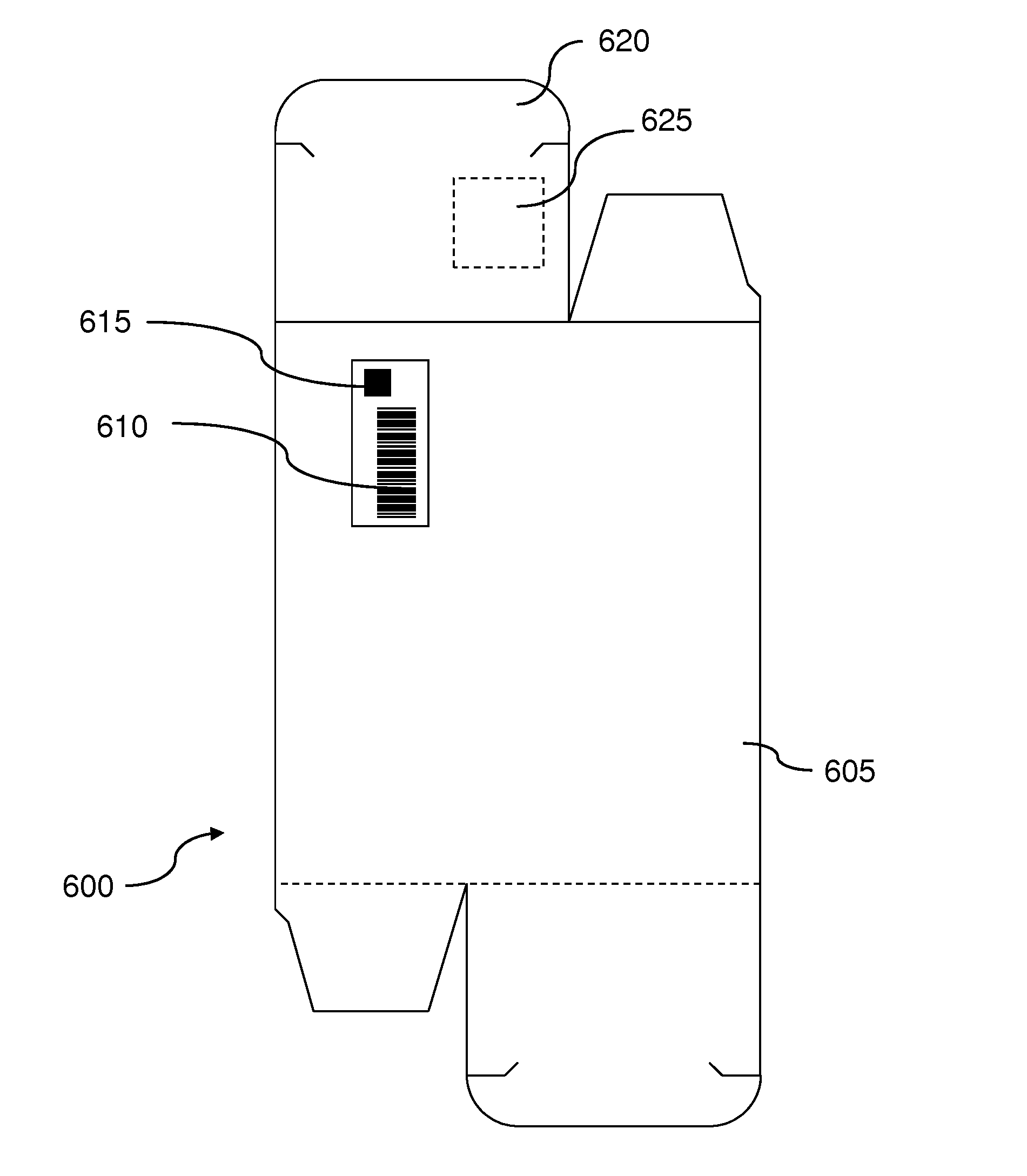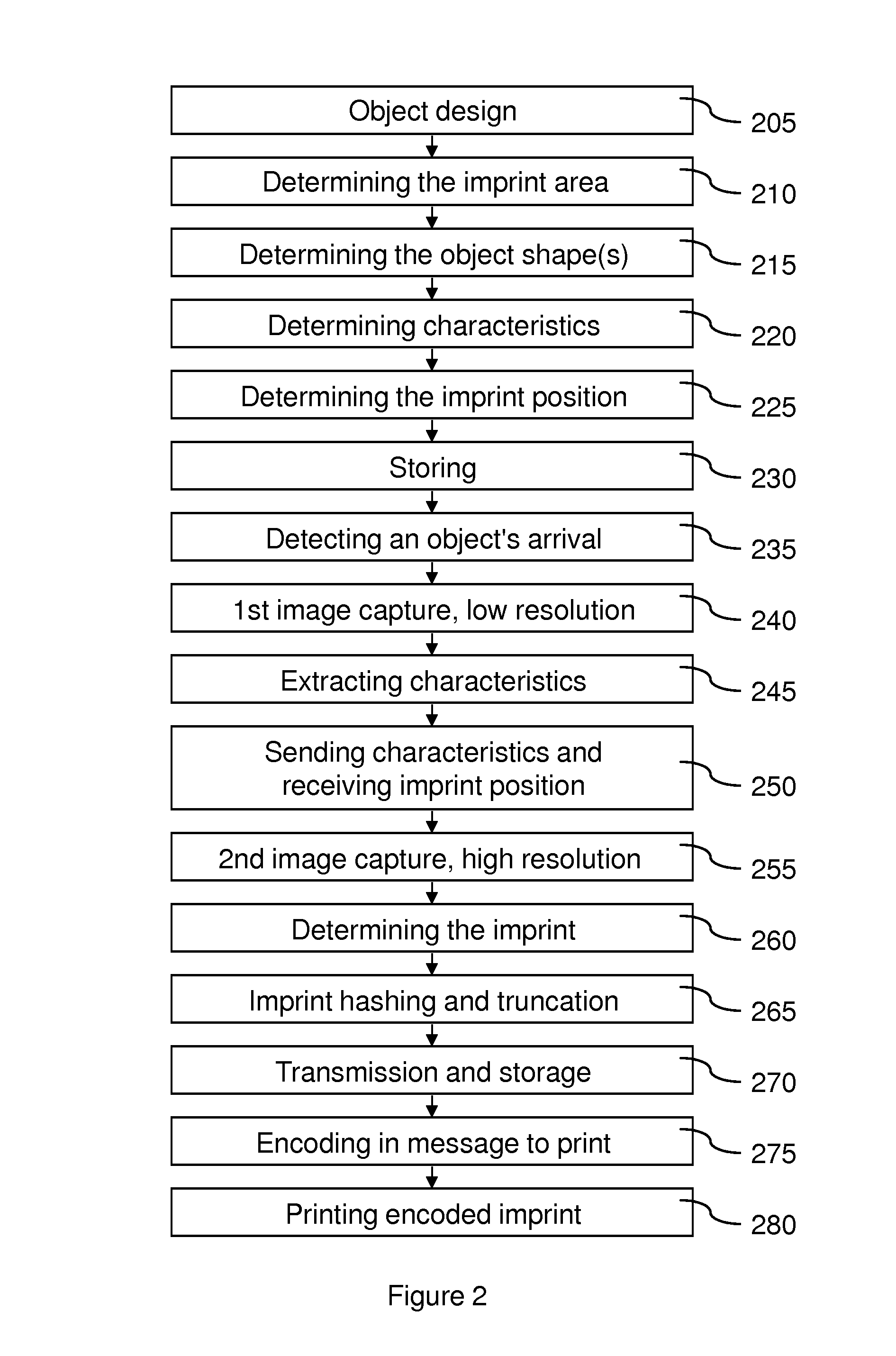Method and device for reading a physical characteristic on an object
- Summary
- Abstract
- Description
- Claims
- Application Information
AI Technical Summary
Benefits of technology
Problems solved by technology
Method used
Image
Examples
first embodiment
[0060]The description of the operation of the method of reading object imprints that is the subject of the present invention follows, with reference to the steps illustrated in FIG. 2.
[0061]In a step 205, an object type is designed, for example a new package.
[0062]In a step 210, each position will be determined of an area on the object from which an imprint or information representing the position of such an area will be read.
[0063]In a step 215, the shape or shapes that the object may take in an image taken by the image sensor 135 is determined (e.g. the front or back side of a package can be seen before folding).
[0064]In a step 220, the characteristic points or lines of the object, in the shapes it may take, are determined.
[0065]In a step 225, the position of each said area within each shape seen is determined.
[0066]In a step 230, the result of steps 215 to 225 is stored, for example in the database 130, for each type of object.
[0067]In a step 235, the arrival of the object near o...
second embodiment
[0091]The description of the operation of the method of reading object imprints that is the subject of the present invention follows, with reference to the steps illustrated in FIG. 3.
[0092]In a step 305, said object is put in motion, for example on a conveyor with a digital image sensor, optical position sensors and a computer for controlling, processing and communicating with the server.
[0093]In a step 310, the arrival of the object near or in the image sensor's field of vision is detected. The speed of the object is then measured and, depending on this speed and the distance between the location of detection of the object's arrival and the end of the sensor's field of vision, the duration to wait before capturing the image of the object is determined. There then follows a wait for this duration.
[0094]In a step 315, a first image of the object is captured, with a first resolution.
[0095]In a step 320, image processing of the object is performed to extract the characteristic contour...
third embodiment
[0105]In the third embodiment, shown in FIG. 4, the geometric shape of the object is used to locate the position of the imprint:[0106]in a step 405, at least a large part of the back surface of the packaging is captured at low resolution,[0107]in a step 410, the boundaries of the object are determined and optionally the object's reference point,[0108]in a step 415, based on the object's boundaries and, optionally on reference points, the database is searched for the object's geometric shape,[0109]in a step 420, based on the object's geometric shape, the associated stored position of the imprint area is determined,[0110]in a step 425, the actual position of the imprint area within the scanner's capture field and the image's angle of rotation are calculated,[0111]in a step 430, the imprint area thus determined is captured at high resolution,[0112]in a step 435, optionally, a rotation inverted in relation to the rotation determined in step 425 is performed,[0113]in a step 440, the impr...
PUM
 Login to View More
Login to View More Abstract
Description
Claims
Application Information
 Login to View More
Login to View More - R&D
- Intellectual Property
- Life Sciences
- Materials
- Tech Scout
- Unparalleled Data Quality
- Higher Quality Content
- 60% Fewer Hallucinations
Browse by: Latest US Patents, China's latest patents, Technical Efficacy Thesaurus, Application Domain, Technology Topic, Popular Technical Reports.
© 2025 PatSnap. All rights reserved.Legal|Privacy policy|Modern Slavery Act Transparency Statement|Sitemap|About US| Contact US: help@patsnap.com



